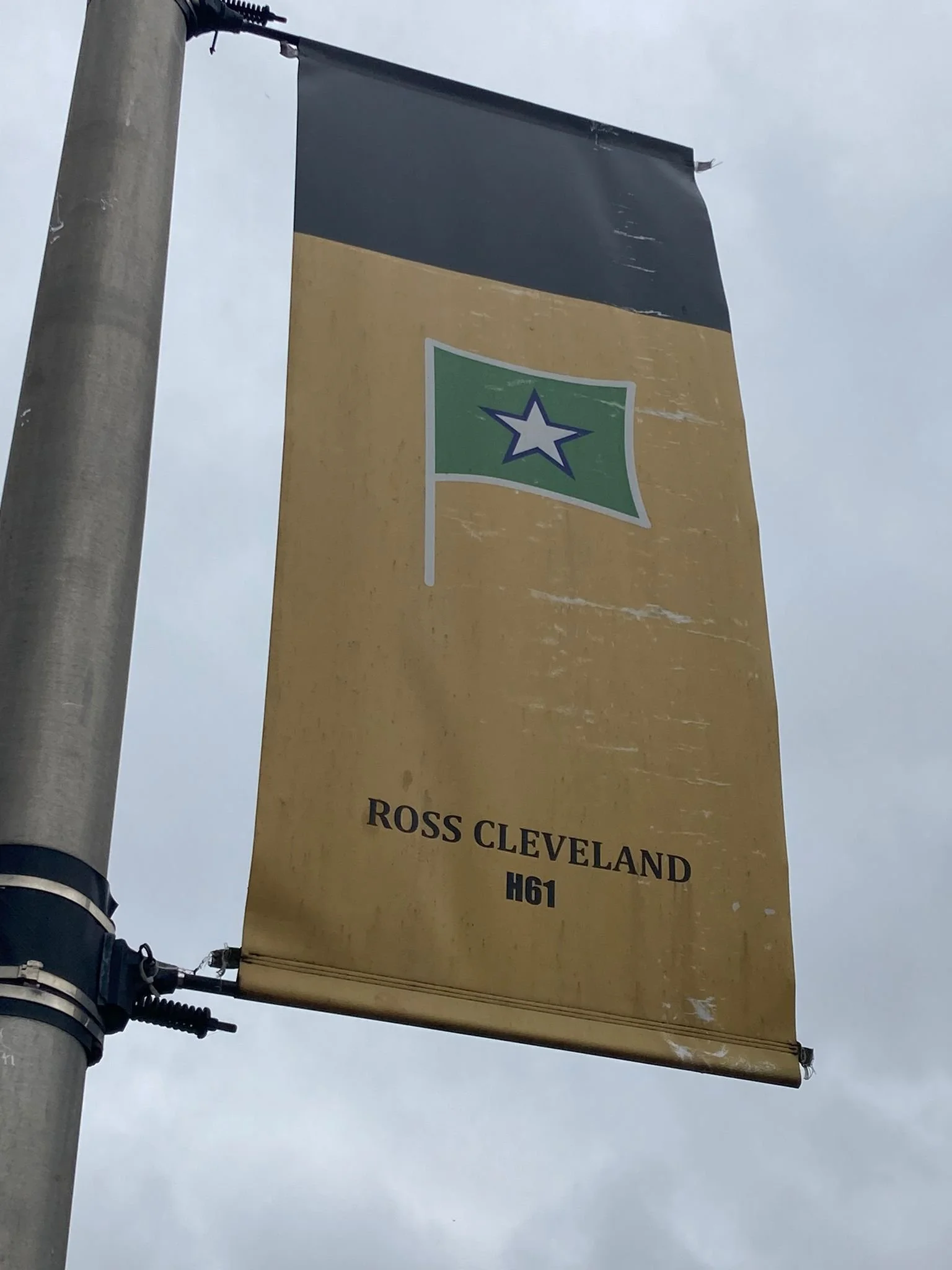Survival and grief: The story of the Ross Cleveland tragedy
ILL-FATED: The Ross Cleveland, then sailing as Cape Cleveland. Trawler pictures courtesy of Jerry Thompson / Bullnose Fishing Heritage Group
Now & Then, a column by Angus Young
Dramatic evidence given to public inquiry on Ross Cleveland sinking fifty-five years ago
Fifty-five years ago last month the public inquiry into the loss of the Hull trawler Ross Cleveland and the deaths of 18 men began at Hull City Hall.
It was the last time Harry Eddom ever spoke publicly about how he survived the disaster that claimed the lives of the rest of the ship’s crew eight months earlier.
During the three-week inquiry, his dramatic witness testimony was only rivalled by evidence given by Len Whur, skipper of another Hull trawler Kingston Andalusite, the nearest vessel to the Ross Cleveland at the time of the tragedy.
Whur was desperately trying to save his own ship after being caught in the worst storm experienced off the north-west Icelandic coast in living memory when he received a radio message from his cousin Phil Gay, skipper of the Ross Cleveland.
The two trawlers were attempting to shelter from the storm in a fjord. Another 28 vessels had also sailed into the fjord hoping to escape from the worst of the weather by seeking a safer anchorage away from the open sea.
At the inquiry, skipper Whur confirmed the chilling words spoken by his cousin seconds before the light on his radar screen indicating the Ross Cleveland’s location disappeared.
“I am going over. We are laying over. Help us Len. I am going over. Give my love and the crew’s love to the wives and families.”
HOME: Ross Cleveland at Hull’s fish dock
At the time, the wind velocity was measured at 70 knots and the air temperature was recorded at minus eight degrees celsius.
As Gay spoke, first mate Eddom was on deck with two other crew members clearing ice from the radar which had stopped working after becoming iced-up. The protective clothing he was wearing would ultimately save his life.
A sudden lurch of the ship knocked him off balance and sent him flying through the air.
He told the inquiry: “I was jammed against the telegraph and heard a voice saying: ‘Come on, we don’t want to be here now.’
“We went along the casing after getting through the starboard door of the bridge. They were getting the liferaft – the bosun (Walter Hewitt), Barry Rogers and some others. I could not see whether the skipper came out.
“The bosun rolled into the liferaft. Rogers had been in the mate’s berth.”
Eddom said there had been no call from skipper Gay for the crew to get into the liferafts because it had all happened so quickly. “There were only about ten seconds from the ship laying over to sinking.”
CALM WATERS: The trawler on an earlier voyage
As he scrambled towards the liferaft, a wave crashed into him.
“She threw me into the water. She swilled me to the aft end where they were getting the raft out. I can only surmise the boson and Barry Rogers pulled me in.”
Once in the liferaft was in the raging sea, Eddom tried to launch a flare and was nearly swept overboard by another huge wave.
The trawler was equipped with three self-inflating liferafts, each one designed to hold up to 12 men. Only three had managed to make it into this one.
“We closed one end of the liferaft but the other had got torn and we could not close that,” said Eddom. Hewitt took off his boots and started to bail water from the raft to stay afloat as the mechanical bailer had been washed overboard.
While Eddom had donned the usual protective clothing for his ice-breaking duties on deck, which included a shirt, jersey and long johns under a full waterproof oilskin ‘duck suit’, socks and thigh-high boots, Hewitt and Rogers were not so lucky.
“The bosun had a jersey, a pair of trousers and wellington boots. Barry had a T-shirt and a pair of long johns. I don’t think he had any boots,” Eddom told the inquiry.
TRIBUTE: A memorial plaque in Hessle Road listing the ‘gallant crew’ who were lost
Adrift on the raft, Eddom attempted to protect 18-year-old Rogers from the elements, rubbing his barely-clothed body, while Hewitt continued to use his boots to bail out water. Their efforts would be in vain.
Rogers was the first to die of exposure in the raft within about 90 minutes, followed soon after by 30-year-old Hewitt.
Eddom would drift for the next 12 hours in the raft with the bodies of his crewmates before it was washed ashore on a rocky headland.
“I was awake all the time we were on the raft. I saw nothing more of the Cleveland after we got into the raft,” he told the inquiry.
“I had no idea where I was when I came ashore….none at all. I saw a light and just walked around the shore until I got to a farmhouse. There was no-one in it.
“I stood behind that until daylight the next morning. I just kept dozing and had no proper sleep. This was when the lad found me. He took me to his farmhouse and then they took me by ship to Isafjord hospital.”
His rescuer was the 14-year-old son of a local farmer who had been driving a flock of sheep with his dog.
‘WELL-SKIPPERED’: The Ross Cleveland
At the hospital Eddom was treated for mild frostbite mainly to his hands and feet. He hadn’t been wearing gloves.
Meanwhile, search parties of local Icelanders recovered the bodies of Hewitt and Rogers and two other crew members, trimmer Fred Sawdon and radio operator Rowland Thompson, whose bodies had been washed up in the days following the loss of the trawler. No other crew members were found.
Before being flown back to Britain to be reunited with his wife and young family in Hull, Eddom was required to carry out the grim task of formally identifying the four bodies of his crewmates.
Eleven days after the loss of the Ross Cleveland the bodies were flown from Reykjavik to Glasgow before three were brought back to Hull by road. The fourth was taken to radio operator Thompson’s home town near Aberdeen.
Eddom told the inquiry he had not sailed under Gay before but regarded him as a “very good skipper and a perfect gentleman”. He added: “He did everything possible to ensure the maximum safety for the ship and the crew.”
Remarkably, Harry Eddom returned to deep-sea fishing three weeks later and he would eventually become a trawler skipper, spending the rest of his working life at sea. Like many, when Hull’s fishing industry collapsed, he switched to working on support vessels in the oil industry in the Persian Gulf.
In his subsequent report, inquiry chairman Wreck Commissioner Mr John Naisby QC highlighted the issue of emergency clothing supplies for trawler crews in the event of having to abandon a vessel.
REMEMBERED: A Ross Cleveland flag in Hessle Road
He urged trawler firms and insurance companies to ensure that suitable and sufficient clothing was packed into liferafts ahead of any trip to distant water fishing grounds.
A separate report by eminent physiologist Griffin Pugh on medical aspects of the tragedy concluded that Hewitt and Rogers might have survived had the liferaft been fully occupied with its entrances fully closed.
The Ross Cleveland was the third Hull trawler to be lost in just two months at the start of 1968, with 58 lives lost altogether. Even before her sinking, a safety campaign led by fishermen’s wives in Hull was already underway.
Her loss also resulted in the relatively unusual scenario of some families being able to bury their loved ones at home while others were left to mourn those never to return.
Shirley Chatfield is Fred Sawdon’s niece. She had taken in two of his five children after their mother died suddenly some years earlier.
“After his wife died he had to give sea up for a short while because of his children but he couldn’t cope being ashore. His heart was going back to sea,” she said.
“His family was taken care of by his sisters-in-law and his niece so he could go back to sea. My Mum took the two girls, another auntie took the eldest boy and I took the two youngest boys.
‘FRED WOULD SWIM HOME FOR HIS FAMILY’: Shirley Chatfield, niece of trimmer Fred Sawdon
“I looked after them for at least six years up to Fred being lost on the Ross Cleveland and afterwards I had those two boys until they both grew up and got married.
“When the Mission man came to inform us that the ship had gone down with all the crew it was a shock. Then a few days later the Mission man came again to our house and said a body had been washed up on the rocks and they thought it could be Fred.
“We had to identify a name on a tattoo they gave us but I didn’t know it. We rang his niece but didn’t tell them the name. They knew a tattoo on his arm had the name of a previous girlfriend he used to go out with before he met his wife. That’s how they identified him.
“We didn’t know what to do but we had to tell the boys what had happened. Rodney was only 14 and David had just got his first job. The next thing was the big funeral. They are all buried in Hedon Road cemetery.
“His children each got the insurance money but I thought it was a pittance really. They got £100 each, that’s what they got for losing their Dad. I thought it was disgusting because they couldn’t have it until they were 21. They had to be 21 before they could claim it.
“What still upsets me is all those people who have lost loved ones on the trawlers whose bodies haven’t come home. We are very lucky because our family member did come home and we have a grave where we can go to and tend it.
“Fred would swim home for his family and I think that’s what Fred had done. He had swam for his life and he was washed up on the rocks. That’s the way he came home.”
Become a Patron of The Hull Story. For just £2.50 a month you can help support this independent journalism project dedicated to Hull. Find out more here








